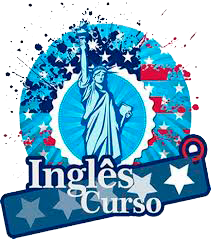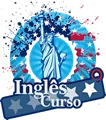Past tense board game Jogo com o passado dos verbos Este é um jogo que reforça as habilidade aprendidas referentes ao passado dos verbos. Você pode imprimir várias folhas do jogo, disponível logo abaixo, e dividir a sala em grupos ou duplas para que os alunos brinquem; pode ainda reproduzir em cartolina para que fique maior e mais visível, assim mais alunos podem fazer parte do mesmo grupo. Uma dica interessante é levar para sala de aula alguns brindes baratos, como bombons ou pirulitos, para dar para os vencedores, isso fará com que o jogo fique bem mais interessante. Download
Mathematical Symbols Símbolos matemáticos Esta atividade é muito interessante, pois traz todos os sinais das operações matemáticas de forma ilustrada e colorida, com seus respectivos nomes e ainda exemplos de cálculos usando esses símbolos. Pode ser usada na la de crianças e adolescentes. Com essa atividade é possível ter uma aula dinâmica, e ensinar Inglês com matemática! Faça o download da atividade no link abaixo e boa aula! Download
Can you swim? Esta atividade é interessante para crianças semi-alfabetizadas, pois tem os desenhos, e os pontilhados para que as crianças possam escrever e responder as perguntas. Você, professor, pode usar esta atividade para trabalhar o verbo modal CAN desenvolver conversação, pois após os alunos completarem as frases é sugerido que eles façam as perguntas uns aos outros. Material utilizado: Folha de atividades que segue abaixo disponível para download gratuito Download
Marcadores de paginas Os marcadores tem mensagens em Inglês e podem ser usados para que os alunos dêem uns aos outros com mensagens atrás escritas por eles em inglês. Uma forma divertida de trocar pequenos presentes e praticar a Língua Inglesa. Faça o download da folha de atividades abaixo, e distribua para os alunos. Download
Easter bunny Vamos colorir o coelhinho da Páscoa e responder algumas perguntinhas sobre ele? Professor, faça o download aqui
Símbolos da Páscoa Easter symbols Que tal informar-se mais sobre todos os símbolos da Páscoa e trabalhar esse texto em Inglês com seus alunos, uma boa dia é dividir a sala em grupos para que cada grupo traduza e explique para toda sala o que traduziu. Obs: Abaixo você tem a versão para download do texto Easter Symbols Easter Candles Easter candles are lit in churches to celebrate the resurrection of Lord Jesus. Christians associate Jesus with the light from candles, hailing Him as "the eternal light" showing Christians the way from death to life. The candlelight ushers in a world of hope and prosperity by driving away the gloom of darkness. Candles are lit during many Easter celebrations, especially the vigil and midnight services before Easter Sunday. Many churches extinguish candles on their altars on Good Friday to show that Jesus’ light has gone out. In Roman Catholic churches, the special paschal candle is lit on Easter Sunday next to the main altar. The candle symbolizes Jesus’ return to life. The candle is often lit during the next 40 days, until it is put out on Ascension Day. The Paschal candle is a special candle for Easter. These paschal candles comprise of engravings of cross and the Greek letters alpha and omega that signify that the Lord is omnipresent. The beeswax, out of which the Easter candle is prepared, represents the purity of Jesus Christ, its wick signifies humanity and the flame is indicative of the Jesus’ divine nature. Easter Gifts People exchange gifts to express love and affection for their near and dear ones. Be it a special occasion or a festival, we take recourse to gifts to convey our feelings. But this seemingly simple task requires one to exert due discretion. While zeroing in on a particular gift, we should keep in mind the particular occasion and the intended recipient. Easter being a festival of merriment and gaiety, people exchange gifts to convey their wishes and blessings. Since Easter is unique for the assorted symbolism of Easter bunny and Easter eggs, one can incorporate these icons as Easter gift ideas. Gift galleries have cashed in on this popular trend by coming out with chocolate Easter eggs and Easter bunny dolls. In the days leading up to Easter, gift shops are inundated with a multitude of gift items ranging from flower bouquets to Easter gift baskets. Easter Cross The cross, the all-pervading icon of Christianity, is an integral element of all Christian festivals including Easter. The crucifix is a cross with an image of Jesus’ body hanging from it and symbolizes the sacrifice Jesus made for the humanity. An empty cross-one without the figure of Christ crucified–reminds Christians of Jesus’ victory over death and the new life and hope this victory brings to believers. The Christian perception of the cross as a sign of redemption stems from the belief that Jesus’ Crucifixion played a central role in redeeming humanity from its sins. When Jesus was crucified, the cross became a symbol of suffering. Then with the resurrection of Christ, the Christians saw it as a symbol of Jesus’ victory over death. During the first 300 years after Christ’s death, Christians feared persecution by the hostile Roman government and rarely displayed the cross in public. In the 300’s, the Romans began to tolerate Christianity, and crosses were widely displayed. In A.D. 325, Constantine at the Council of Nicaea issued a decree that the Cross is the official symbol of Christianity. On Good Friday, the cross is covered with black, a color for mourning for the death of Jesus. Before the Easter Sunday, the draping in black is removed and the cross is rather decorated with flowers to honor the Jesus’ return to life Easter Bunny The Easter bunny is one of the most adorable Easter symbols. During Easter children eagerly wait for this furry benefactor to bring them colored eggs and gift baskets filled with chocolates. The legend of Easter bunny has given birth to popular games such as Easter egg hunt. During Easter gift galleries are swamped with cute stuffed bunny toys and confectionary shops do brisk business by selling chocolate bunny rabbit cookies and cakes. The origin of the Easter bunny can be traced to ancient pagan celebrations which regarded rabbits as symbols of fertility because these animals give birth to multiple offspring at a time. Since rabbits were fertility icons, these became symbols of the rising fertility of the earth at the Vernal Equinox. Ancient tribes celebrated the beginning of spring at the vernal equinox by blessing seeds for growth and placing colored eggs on an altar. Easter bunny became a part of modern day Easter celebration in Germany, where tales were told of an "Easter hare" who laid eggs for children to find. German immigrants to America — particularly Pennsylvania — brought the tradition with them and spread it to a wider public. They also baked cakes for Easter in the shape of hares, and may have pioneered the practice of making chocolate bunnies and eggs. Easter Lily Among the multitude of spring flowers, the Easter white lily is the traditional Easter flower and is considered the symbol of the resurrection of Christ. The large, pure white blooms of the Easter Lilies are symptomatic of the pure new life that comes through the Resurrection of Jesus. Today, on Easter morning, churches are bedecked with white lilies in remembrance of the loved ones, who passed away. The white Easter lily also symbolizes purity. Artists for centuries have portrayed the angel Gabriel coming to the Virgin Mary with a spray of lilies in his hand, to announce that she is to be the mother of the Christ child. Roman mythology associates the white lily with Juno, the queen of gods. It is said that when queen Juno was feeding her baby son Hercules, a portion of the milk fell on to the earth, leading to the blooming of gorgeous white lilies.
Easter Páscoa A atividades para download é um texto com perguntas para trabalhar a interpretação e conversação sobre como é celebrada a pascoa nos Estados Unidos Download aqui
Nouns x Verbs Caro colega, segue abaixo a explicação gramatical em inglês de substantivos e verbos. Você pode usar o resumo tanto para seu proprio conhecimento, quanto para passar ou revisar esse tópico gramatical com seus alunos. A vantagem de abordar a gramática dessa forma é que ao mesmo tempo você vai praticar vocabulário e ensinar gramática! Obs: Depois do resumo gramatical segue exercícios sobre verbos e substantivos de nível básico, ou seja, muito fácil! Boa aula! What is a noun? A noun is the word that refers to a person, thing or abstract idea. A noun can tell you who or what. There are several different types of noun:- · There are common nouns such as dog, car, chair etc. · Nouns that refer to things which can be counted (can be singular or plural) are countable nouns. · Nouns that refer to some groups of countable nouns, substances, feelings and types of activity (can only be singular) are uncountable nouns. · Nouns that refer to a group of people or things are collective nouns. · Nouns that refer to people, organizations or places are proper nouns, only proper nouns are capitalized. · Nouns that are made up of two or more words are called compound nouns. · Nouns that are formed from a verb by adding –ing are called gerunds What is a verb? · Verbs are a class of words used to show the performance of an action (do, throw, run), existence (be), possession (have), or state (know, love) of a subject. To put it simply a verb shows what something or someone does. · Most statements in speech and writing have a main verb. These verbs are expressed in tenses which place everything in a point in time. · Verbs are conjugated (inflected) to reflect how they are used. There are two general areas in which conjugation occurs; for person and for tense . · Conjugation for tense is carried out on all verbs. All conjugations start with the infinitive form of the verb. The infinitive is simply the to form of the verb For example, to begin. The present participle form (the -ing form), is formed by adding ing to the bare infinitive. For example, the present participle of the verb to begin is beginning. There are two other forms that the verb can take, depending on the tense type and time, the simple past form (began) and the past participle (begun). · Conjugation for person occurs when the verb changes form, depending on whether it is governed by a first, second, or third person subject. This gives three conjugations for any verb depending on who is acting as the subject of the verb. For example, we have: to begin, you begin , and he begins. Note that only the third conjunction really shows a difference. · While most English verbs simply do not show extensive conjugation forms for person, an exception is the verb to be. Exercícios Nouns x Verbs Respostas
What did you do yesterday? Objetivo: Trabalhar verbos no passado tanto os regulares quanto os irregulares bem como números e horas. Material: Os alunos podem usar o caderno ou folhas de A4, e a lista dos verbos irregulares. Desenvolvimento: Entregue a cada aluno uma lista de verbos irregulares (disponível abaixo para download) e peça a eles que descreva como foi o dia anterior, não esquecendo de utilizar o maior número possível de verbos no passado. Estipule o mínimo ou máximo de frases a serem feitas. Por exemplo, cada aluno vai fazer 5 frases sobre seu dia de ontem, usando 5 diferentes horas. Ex: 2:30 = I went to the supermarket at two thirty yesterday. 5:15 = I arrived home from school at five fifteen. Lista verbos irregulares
Irregular Past Tense Exercise Fill in the blanks below with one of the 15 irregular past tense verbs in the box. ate came did drank gave got made met ran read saw swam took went rode (1) He _________________ his homework before he went to school. (2) It was cold so we _________________ some hot chocolate. (3) I _________________ a sandcastle when I went to the beach. (4) It was a hot day so she _________________ in the lake yesterday. (5) His car had a flat tire so he _________________ the bus to work. (6) I _________________ a horse last summer when I went to my uncle’s farm. (7) I was late for class so I _________________ to school. (8) I _________________ two hamburgers so I am full. (9) I _________________ a good book before I went to bed. (10) She _________________ a lion when she went to the zoo. (11) A letter _________________ in the mail today. (12) They _________________ hiking yesterday. (13) I _________________ my brother a game for his birthday. (14) She _________________ a good report card so her mom was happy. (15) I _________________ my friends when we went to the park. Gabarito 1- did 2- drank 3- made 4- swam 5- took 6- rode 7-ran 8- ate 9- read 10- saw 11- came 12- went 13- gave 14- got 15- met


